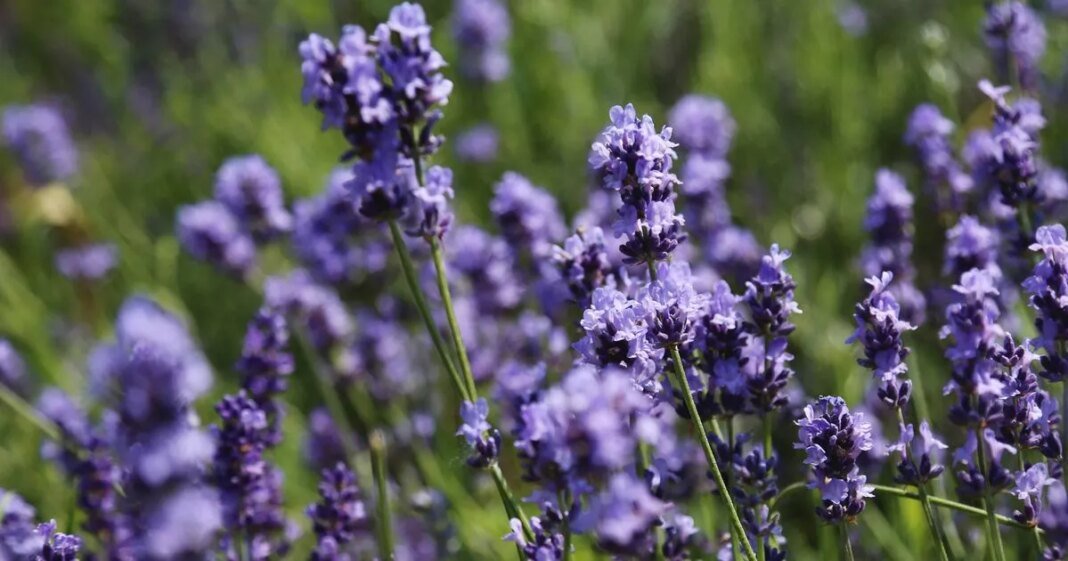Lavender lovers, take note – for those aiming to cultivate their most spectacular crop of aromatic purple blooms, there’s a deceptively simple ingredient that could boost your garden game this season.
Gardening expert Jean unexpectedly hit the jackpot with her herbaceous plants when a botched sand mix turned out to be a blessing in disguise. The brain behind the popular Green Jeane forum, Jean was initially dismayed when she mistakenly used the wrong blend in her garden, but her lavender soared as a result, leading her to let fellow enthusiasts in on her inadvertent revelation.
Jean stumbled upon a DIY fertiliser goldmine by mixing eggshells into her soil and couldn’t wait to broadcast her findings, sharing: “The lavender also had some of that old sandy mix but also lots of eggshells mixed in, so it was doing much better and I didn’t bother to remove the sand when repotting it.”
Ecstatic with her newfound trick, she couldn’t contain her excitement: “I’m amazed at how much bigger and healthier the lavender looks!” While tossing eggshell bits into your flower beds may raise eyebrows, it turns out these kitchen scraps are calcium-rich wonders that not only bolster plant fortitude but also improve soil drainage – a boon for moisture-sensitive lavender.
Given that lavender flourishes in neutral to alkaline earth, using eggshells can be just the tweak needed to dial down soil acidity, thereby setting up an ideal growing environment for these fragrant shrubs.
Ever keen to share her wisdom, Jean champions eggshells as a cheap and eco-friendly addition to lavender care routines while noting that stockpiling enough shells might be the only challenging part of this hack.
“The only downside to using eggshells is that you have to be patient and save up a lot (or eat lots of eggs! ) but I don’t repot that often, so I usually have just enough,” she explained. For those keen on using eggshells as a natural feed for lavender plants, the process is surprisingly simple, but it requires meticulous cleanliness.
Jean advised: “If you’re going to use eggshells, be sure to rinse them first and dry thoroughly (a day or two) before crushing. Sticky membranes and yolk reside left inside the shell will make it clump together and have an odour.”
All you need to do is rinse the eggshells thoroughly after cooking to get rid of any remaining yolk residue as any food left can attract pests as well as be very smelly.
Jean said: “If you’re going to use eggshells, be sure to rinse them first and dry thoroughly (a day or two) before crushing. Sticky membranes and yolk reside left inside the shell will make it clump together and have an odour.”
Once you have enough eggshells, place them on a baking tray and cook them in the oven at 200C for 10 to 15 minutes, reports Devon Live. When the time is up, use a rolling pin or other large object to crush the eggshells into small pieces.
It is important to dry out and crush eggshells as it will help them decompose faster, which will help the lavender absorb the nutrients more efficiently.
The sharp, jagged pieces of eggshell can also act as a deterrent for many pests such as slugs, snails and other insects, keeping your lavender plants safe.
Each lavender plant only requires one to two tablespoons of eggshells, and this homemade mixture should be applied once in spring and then again in summer to reap the benefits.
It’s important to use natural fertilisers sparingly, as an excess of nutrients in the soil can lead to overfertilisation and potentially burn the plant roots.
Taking the time to create dried crushed eggshells will not only keep your lavender plants healthy and improve the soil, but it will also help keep certain pests at bay, ensuring your flowers flourish throughout spring.
At Reach and across our entities we and our partners use information collected through cookies and other identifiers from your device to improve experience on our site, analyse how it is used and to show personalised advertising. You can opt out of the saleor sharing of your data, at any time clicking the "Do Not Sell or Share my Data" button at the bottom of the webpage. Please note that your preferences are browser specific. Use of our website and any of our services represents your acceptance of the use of cookies and consent to the practices described in our Privacy Notice and Privacy Notice.

